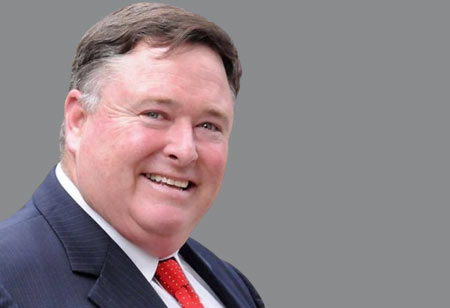Thank you for Subscribing to Construction Business Review Weekly Brief

Asbestos Operations
The Resource Conservation and Recovery Act, RCRA. This is the cradle-to-grave law enacted in 1976 governing the disposal of solid and hazardous waste. We may never eliminate all asbestos in our world; however, we must continue vigilance to find, quantify and remove it wherever possible. Having worked in the industry for over 44 years and having both newer and older assets, I am aware of the risks of asbestos in our built environment. In older buildings, up through the end of the 1970s, the concept of presumed asbestos-containing materials, or PACM, should be adhered to, as ignorance is not bliss when it comes to the health and safety of workers.
Presumed Asbestos means guilty until proven innocent. If you have an older building, some of the materials contained within it may be asbestos-containing materials. You should have the practice of performing a building materials survey and testing to confirm whether there is asbestos anywhere in the construction or tenant improvement. When we think about asbestos, our minds tend to regard fireproofing, thermal systems insulation, TSI and ceiling tiles as the friable suspects. However, we cannot forget other materials like mastics, adhesives, flooring, drywall, and tapping muds. Although not generally considered friable, these two can be asbestos; they certainly can be made friable during demolition and construction. Once you survey and document the building materials containing asbestos, and even trace asbestos in some states, you should develop a plan for abatement or removal and abate as soon as practical.
Most commercial space users today will not tolerate the presence of asbestos, even if it’s not friable, so abatement is generally the only path forward to assure tenant satisfaction and safety. Generally, if abating over a certain number of materials, notification to the local or state air district is a requirement.
Most commercial space users today will not tolerate the presence of asbestos, even if it’s not friable, so abatement is generally the only path forward to assure tenant satisfaction and safety
Selecting a consultant: It is essential to manage your company’s risk, and therefore, selecting a consultant to guide the process is necessary to achieve the best results. When choosing a consultant, investigate their background, education, training and references, as you will learn from them when difficult decisions are required. Remember, you are managing your company’s risk here.
Selecting a contractor: when selecting a contractor, it is essential to check their experience, compliance and methods early in the process and choose the best balance of cost, scope, reputation and risk and liability. As you move into the abatement, understand the impact not only on the space being abated, but also on the tenant above, below or around the activity, as abatement is both noisy and can be a dampening experience if the plastic enclosure is not watertight. It is most certainly amazing how a drop of water can find its way through multiple layers of 6 mil plastic sheeting to the space on the floor below. During abatement, air sampling is also required to ensure no fibers get released from the enclosure under abatement. After abatement, air clearance samples are needed before you can turn off the negative air machines and remove the enclosure to return the space to the contractor performing the construction work.
Removal of the abated materials is necessary to ensure that they are sealed up tight, manifested and directed through an approved transporter to the certified landfill site. Remember the concept of cradle to grave regarding certain waste classifications?
Well, that means whoever dumped the materials there is responsible, into perpetuity, for their portion of clean-up costs, should the landfill operator not perform in an approved manner. We talked earlier about risk and liability, and this is the part of that talk that adds up to unlimited costs to the generator when things go wrong. Some people don’t take this seriously enough and are willing to senselessly put the generator or owner at risk. This is unnecessary, and a good consultant will guide you away from those pitfalls that add up to innovative business and lower risks for the generator/ owner, who will own this abated material forever and ever: recordkeeping and documentation.
Keeping good and complete records and documentation is critical to minimize the risk to the generator/owner. Like the landfill, this is required in perpetuity, which can be tricky as the turnover of employees is frequent. Even if staffing is stable, this requirement certainly passes career lengths. Hence, a sound system of recordkeeping that can stand the test of time, technology and people turnover is essential. When you look for resources to consult and contract with, look for the ones that can stand the test of time and attention.








